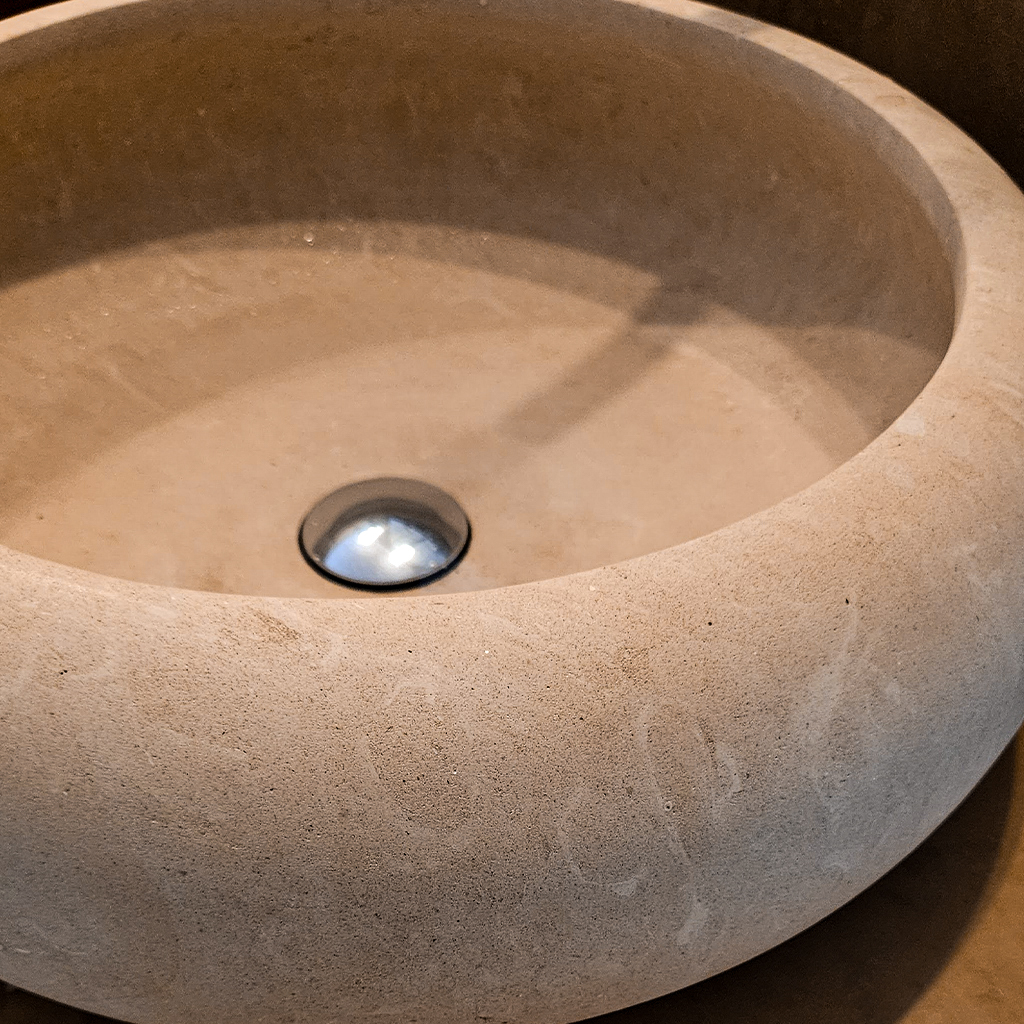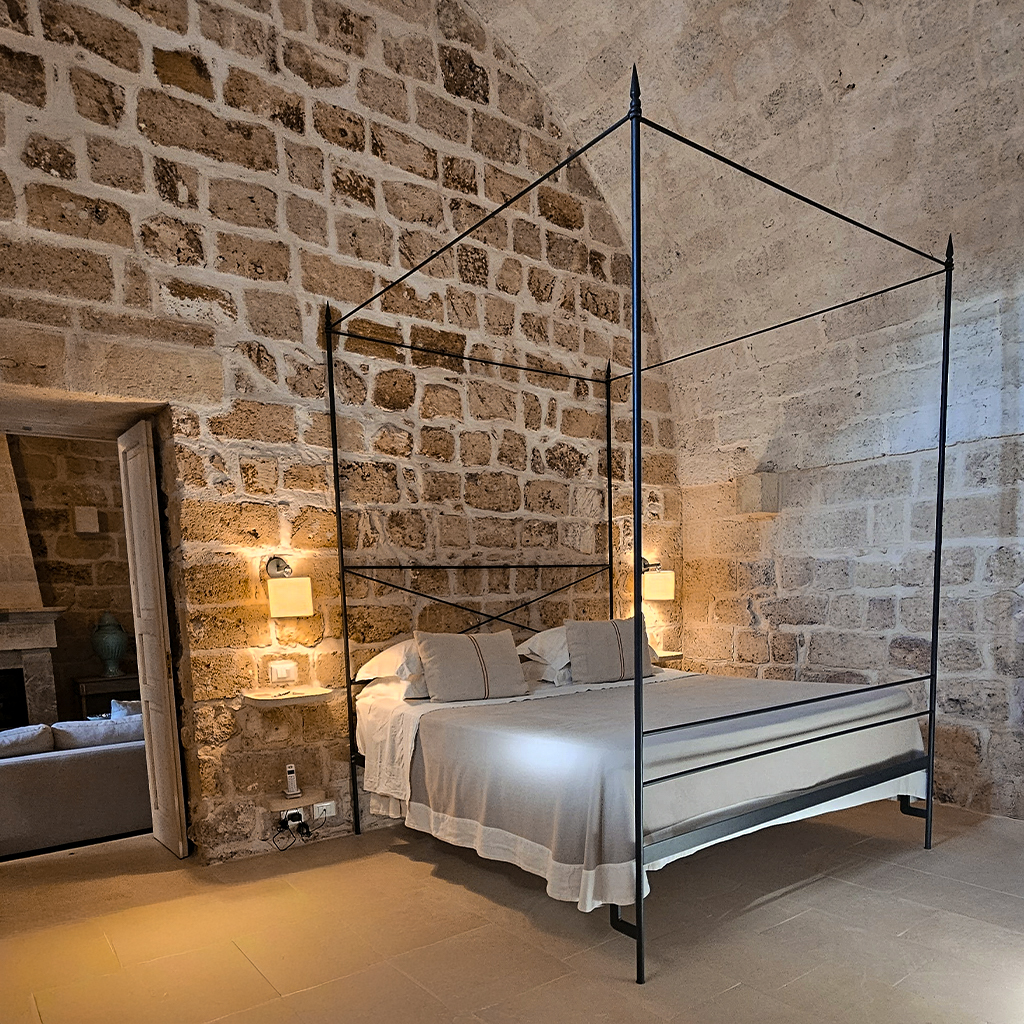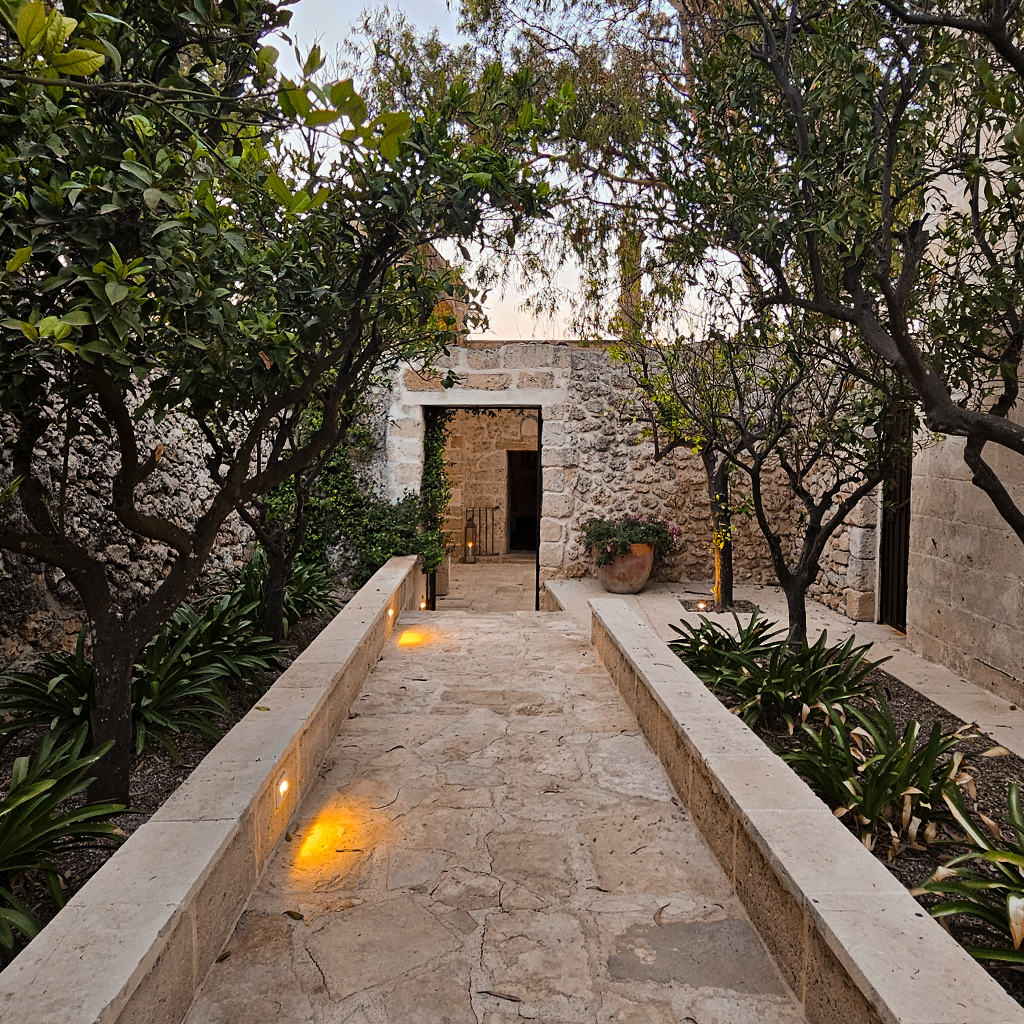Continuing our journey through the universe of natural stone, today we dive into a story that is particularly dear to me. My relationship with Lecce Stone did not begin in Lecce, but in Verona, during the 2010 Marmomac fair. It was there that I came across a project by designer Luca Nichetto that used this stone in a way that instantly captivated me. Its warm color and apparent lightness left a lasting impression. Since then, I have nurtured the expectation of one day working with it at TCC Whitestone, but the opportunity never arose.
Although the professional opportunity never came, curiosity led me to its origin. So, in 2024, I took a few days of vacation to visit Lecce in the Puglia region, in Italy, and immerse myself in its essence. Staying in a traditional masseria in the Puglia region, a few kilometers from Lecce, a fortified farmhouse typical of the area, my second contact with the stone was tactile and sensory. The thick walls, which for centuries had protected its inhabitants, breathed history. Its porous and warm surface under the Mediterranean sun was the perfect prelude to what I would discover in the historic center of Lecce, the "Florence of the South." In that same masseria, this stone lined bathrooms and gave life to sculpted sinks with a careful and simple design, letting the stone be the protagonist. This article is, therefore, a brief account of that dual journey: a personal connection with a material that fascinates me and a professional exploration of its infinite possibilities.
Now in 2025, I really wanted to challenge the TCC Whitestone design team to work with Lecce stone, so we visited Marmomac once again, but this time, one of the goals of the visit was to find this stone and show it to the team. So, imagine my surprise when, visiting the latest edition of Marmomac, I searched in vain for an exhibitor of this magnificent stone. It might have escaped our notice. In any case, whether due to its absence or our failure to look properly, instead of discouraging me, it only reinforced how special and timely it could be to give it the opportunity to continue writing history.
To understand Lecce, one must first feel its stone. The acclaimed architect Renzo Piano described it as having an "inner light," and it's true. At sunset, the city is bathed in a golden glow that emanates from its facades. This limestone rock, formed millions of years ago in the Miocene period, has a unique composition rich in clay, which gives it exceptional workability. Freshly quarried, it is so soft that it earned the name pietra gentile ("gentle stone"), and can be carved with simple tools, almost as if it were wood. However, its true "miracle" happens when, exposed to the air, it hardens and creates a protective patina that ensures its durability, preserving the finest details for centuries. It was this fantastic characteristic that allowed the delicate heritage of the Lecce Baroque to reach our days intact.
The journey of Lecce Stone, from the darkness of the subsoil to the light of Baroque facades, is an ode to human ingenuity and resilience. It is a story of dialogue with the earth, where the hand of man learned to "read" the stone and release the forms contained within it.
The extraction of Lecce Stone takes place in vast open-pit quarries. For centuries, this was arduous manual labor, where generations of stonecutters detached the blocks with techniques that required strength and precision. From the 1950s, mechanization with cutting machines transformed the process to meet a growing demand, but it also raised questions about sustainability.
Once extracted, the block is handed over to the scalpellini, the master craftsmen who are heirs to the tradition that carved the intricate details of the Lecce Baroque. Today, technology complements the craft, with computer numerical control (CNC) machines performing precise cuts. However, the stone does not allow for a mirror-like polish like marble. Observing the details on the streets of Lecce, I felt a deep admiration for this symbiosis between the power of the machine and the soul of the human hand.
Walking through the historic center of Lecce is like entering an open-air museum, where every building tells a story of faith, power, and exuberant creativity. It was the perfect fusion of a unique local material and a historical moment of great fervor that gave rise to an artistic miracle: the Lecce Baroque.
According to books about Lecce that I purchased on that trip, the crucial turning point was the Battle of Lepanto in 1571. The victory of the Christian league over the Ottoman Empire brought a new sense of security to the Salento Peninsula, which for centuries had lived under the constant threat of Turkish raids. Freed from this fear, the cities felt an impulse for reconstruction, a desire to express their faith and prosperity through architectural magnificence. It was in this climate that local artists, from the 17th century onwards, found in Lecce Stone the perfect medium to unleash their imagination.
Far from being a material relegated to the past, Lecce Stone continues to inspire. Today, the stone is used in cladding for modern facades and interiors, where its texture and warmth create dialogues between the old and the new. The project for the Salento Biomedical District, in a former convent, is a perfect example, where contemporary elements, such as a metallic reception desk, contrast with and enhance the beauty of the original stone. The reinvention of Lecce Stone also enters forcefully into the world of product design. There are still some companies collaborating with designers to create sculpted lamps, tables, and vases, bringing the beauty of the stone into everyday life and we pretend to be part of this movement.
Artists like Renzo Buttazzo have elevated sculpture in Lecce Stone to an international level, creating pieces for luxury brands like Armani and Louis Vuitton, democratizing access to the beauty of a "fragment of Salento."

My trip to Lecce was a rediscovery of the power of authentic materials. In a world increasingly dominated by synthetic and perfect surfaces, Lecce Stone is a reminder of the beauty of imperfection, of the patina that time confers, and of the stories a material can tell. Every vein, every embedded fossil, every mark of the artisan's chisel is a visible expression of its history, a tangible connection to the land and the culture that shaped it.
This experience reinforced my conviction, as a professional at TCC Whitestone, that our work goes beyond supplying stone; it is about offering fragments of history, connecting people and spaces to the authenticity of nature.
Lecce Stone, with its duality of gentleness and strength, its Baroque heritage and its innovative future, is the personification of this philosophy. It is not just the raw material of Lecce; it is its essence, its soul. The "stone of light" of Salento not only illuminates its glorious past but continues to shine, with a renewed intensity, towards the future of design and architecture.
Sergio Costa, 2025




